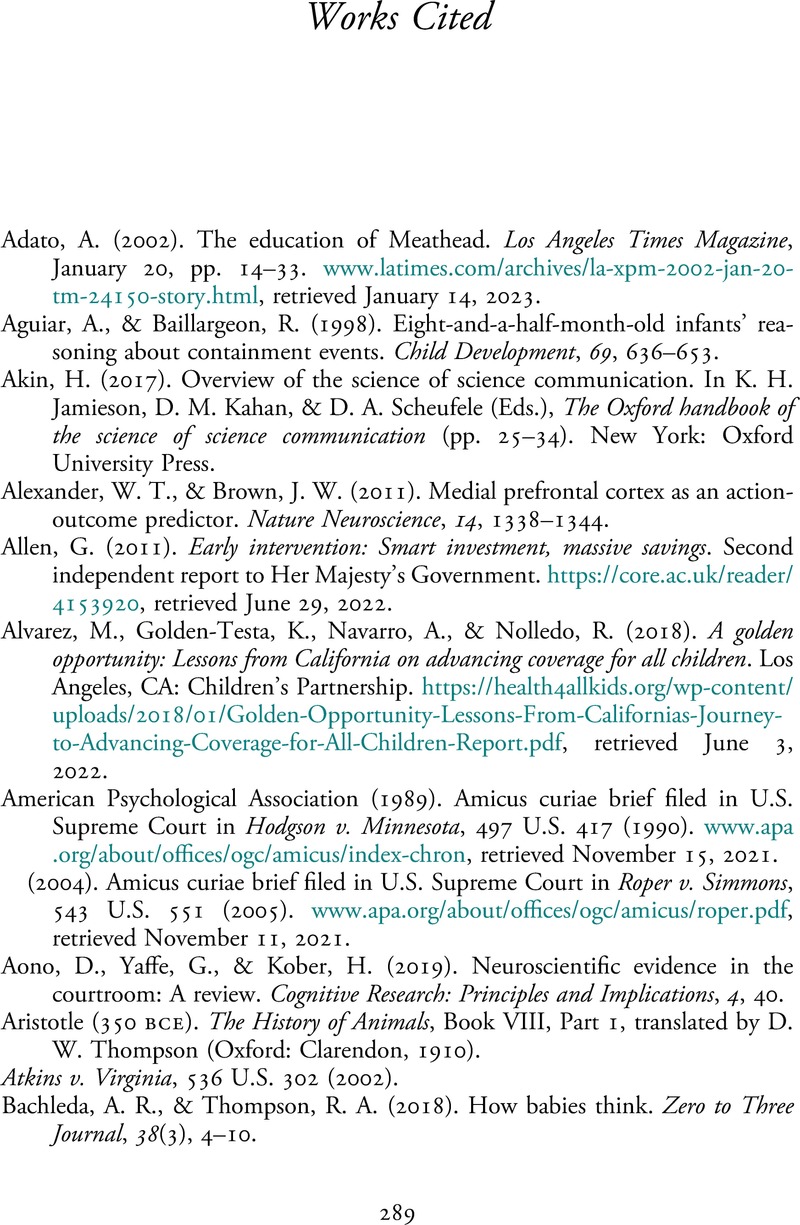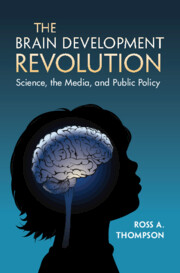Book contents
- The Brain Development Revolution
- The Brain Development Revolution
- Copyright page
- Contents
- Figures
- Preface
- Chapter 1 Science Does Not Speak for Itself
- Chapter 2 The Supreme Court Considers Adolescence
- Chapter 3 Dispatches from the Laboratory
- Chapter 4 I Am Your Child
- Chapter 5 “Follow the Science”
- Chapter 6 Framing Developmental Science
- Chapter 7 Who Speaks for Developmental Science?
- Notes
- Works Cited
- Index
- About the Author
- References
Works Cited
Published online by Cambridge University Press: 24 August 2023
- The Brain Development Revolution
- The Brain Development Revolution
- Copyright page
- Contents
- Figures
- Preface
- Chapter 1 Science Does Not Speak for Itself
- Chapter 2 The Supreme Court Considers Adolescence
- Chapter 3 Dispatches from the Laboratory
- Chapter 4 I Am Your Child
- Chapter 5 “Follow the Science”
- Chapter 6 Framing Developmental Science
- Chapter 7 Who Speaks for Developmental Science?
- Notes
- Works Cited
- Index
- About the Author
- References
Summary

Information
- Type
- Chapter
- Information
- The Brain Development RevolutionScience, the Media, and Public Policy, pp. 289 - 312Publisher: Cambridge University PressPrint publication year: 2023
